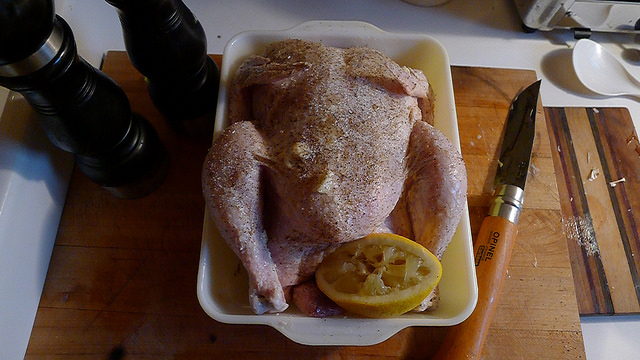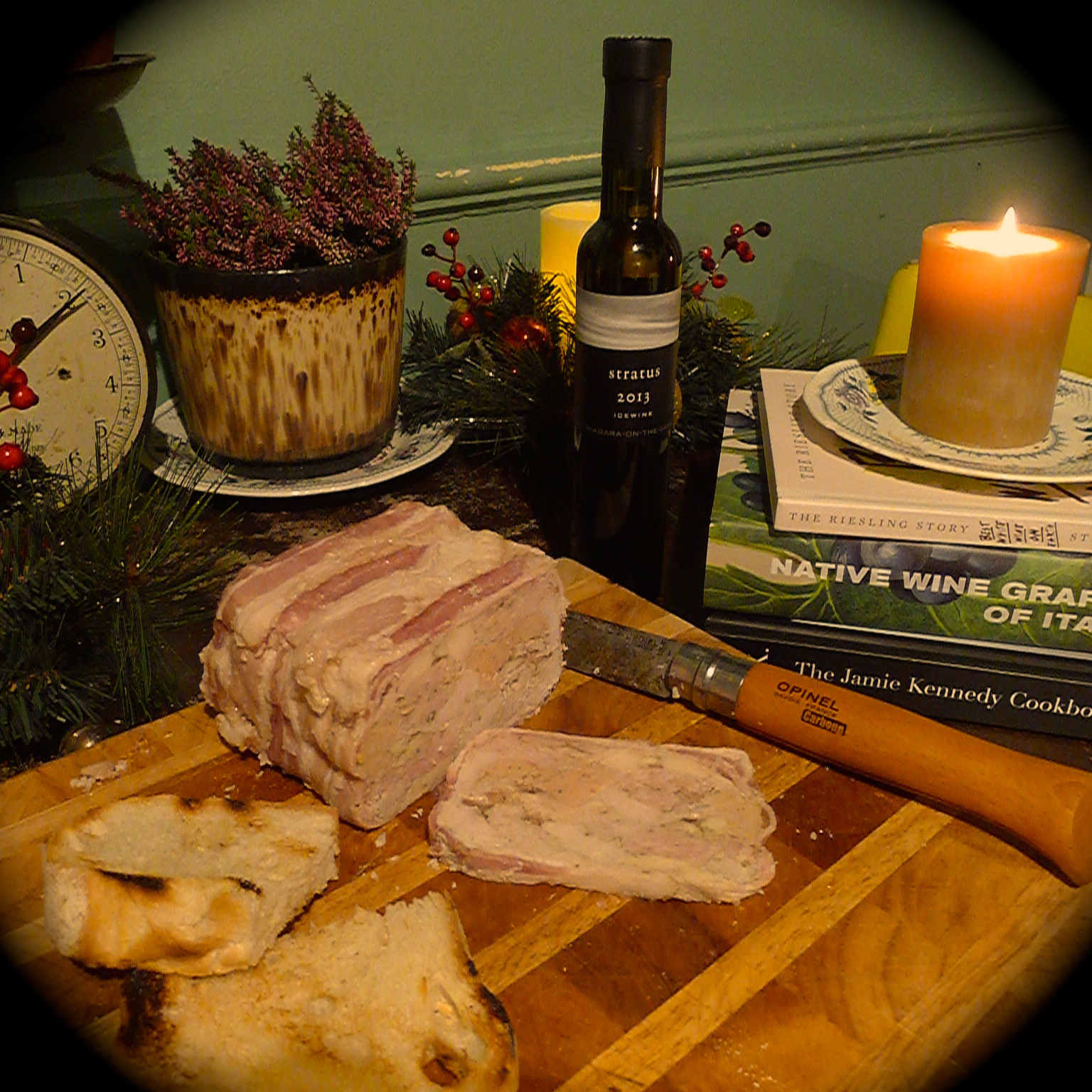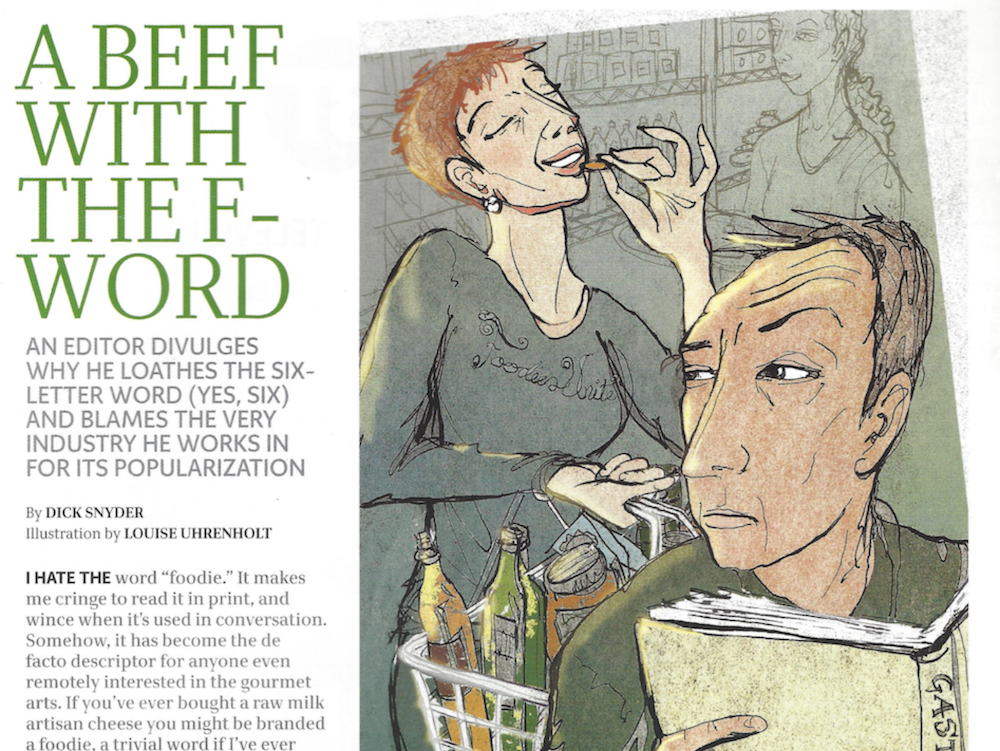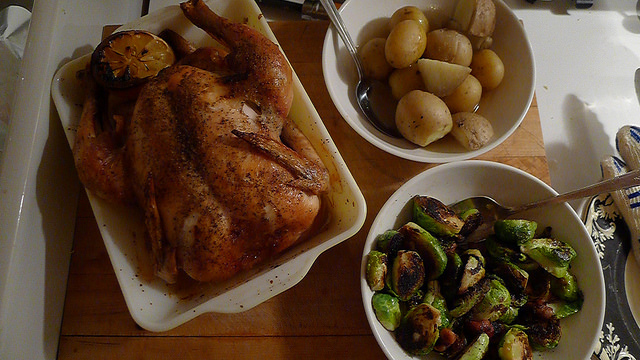
“Classic, unmucked-about-with roast chicken… and its pan juices” – Nigel Slater, Appetite (2000) and it was Mr. Slater who brought me to my chicken epiphany, as a flavourless supermarket bird has nowhere to hide when cooked in this manner.
I place the blame for my ongoing obsession with chicken firmly at the feet of UK cookbook author Nigel Slater. Throughout my university years and beyond I had cooked the odd whole bird and sizzled up a few stirfrys, but it wasn’t until Slater drew my attention to how the chicken actually tasted that I came to the realisation that everything Gallus-gallus-domesticus-wise that had gone before was actually quite awful. Supermarket chicken can do that to one’s palate.
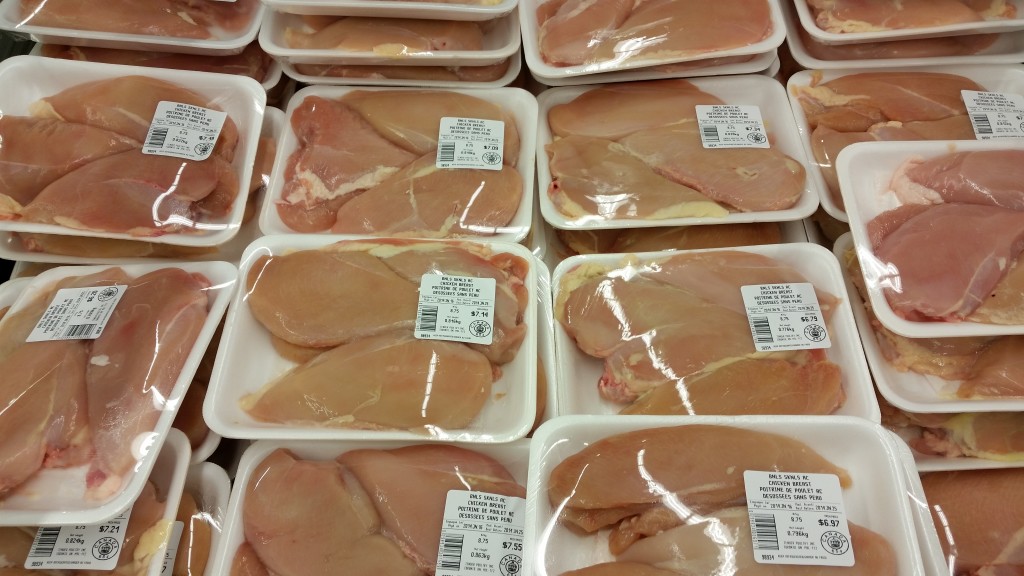
Yes, sadly this is how most of us in Canada know the Gallus gallus domesticus AKA the common domesticated chicken. Insipid, slimy, and clinically packaged in this fashion. Bald albino rats anyone?
What the vast majority of the populace of the developed world think of as being chicken is for the most part supermarket chicken. And by this I mean antibiotic-stuffed, hormone-pumped, ammonia-soaked, filthy-water-chilled, flavourless cuts of skinless and boneless bits packed in styrofoam that look more like bald albino rats than anything else.
It’s no wonder we created the clichéd term “tastes like chicken”, as for the most part the chicken we consume, some 40 billion chickens per year worldwide, is devoid of anything approaching flavour, and is simply viewed as an crazily inexpensive source of protein. It appears that we are greedy for cheap chicken.
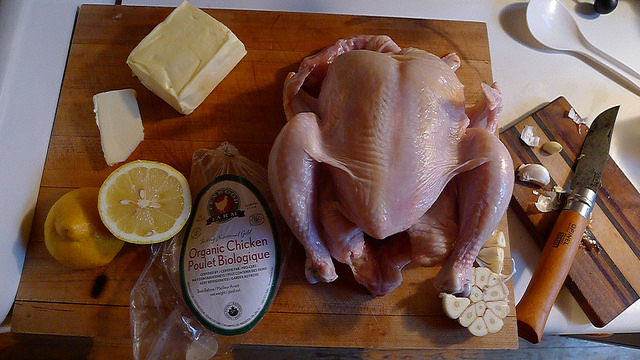
Fenwood Farms Certified Organic chickens are really exceptional taste-wise, but at up to $6.50 a pound who can actually afford this everyday except Land Rover-driving Pollanites and their ilk?*
Indeed many of us have become so used to seeing, purchasing, and consuming chicken in this form that in the mind there is often no correlation between the pale, slimy, chilled parts slumbering in the neon-lit store shelves and the animal from whence it came. I have a very good friend back in Edinburgh who professes to absolutely love chicken, ordering it whenever he dines out, and yet he refuses to eat anything bar skinless and boneless breast meat, which invariably tastes of nothing bar the preparation. Granted, this is the same friend who has his wife cut all the fat off his bacon before it’s cooked, so perhaps he’s not the best example…
When working at Jamie Kennedy Wine Bar I’d often speak intensely with Chef Tobey Nemeth (now of Toronto’s Edulis) about chickens and her eternal quest to find a REAL chicken:
“A real chicken should be a reminder of a childhood memory, your grandmother’s kitchen, thick skin eaten with closed eyes… chicken shouldn’t be soft – it should be toothsome and textured, fragrant and emphatically flavourful” – Tobey Nemeth
It was during these years at the Wine Bar that I was introduced to the world of what a few of us at the time referred to as “illegal chickens”, contraband birds covertly delivered to private individuals by farmers who raised chickens but didn’t have a licence to sell them. Damn, they were some good chickens, but this was obviously extreme niche poultry for those in the know.
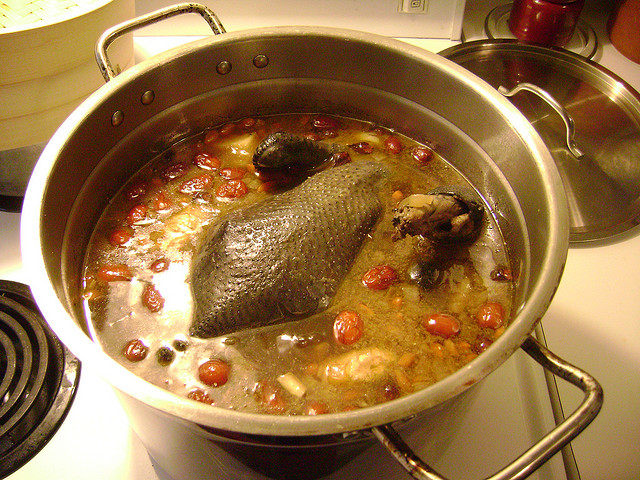
At one point my quest for the perfect chicken took me to Chinatown and I was introduced to the Silky/Silke black-skinned chicken, here cooked in Coca Cola… seriously.
And then there is the subject of cost. Every time I sit down to write about the provenance of food I run into the same set of self-questioning doubts. Is it fair to be writing about how wonderful local and organic can be when so few can afford such luxuries?
It’s obvious that the vast majority of people are happy with their chicken as is, and with certified organic Ontario chickens running up to $7 a pound, how can most people justifiably afford a small chicken that would be a real push to feed a family of four with for just under $30? Given that one can buy a comparably-sized bird at No Frills for $6.88 it’s no wonder that this intensively factory farmed poultry is as popular as it is. And I’m not even going to touch on the provenance of the chickens I have seen as low as $1.29 (US) a pound…
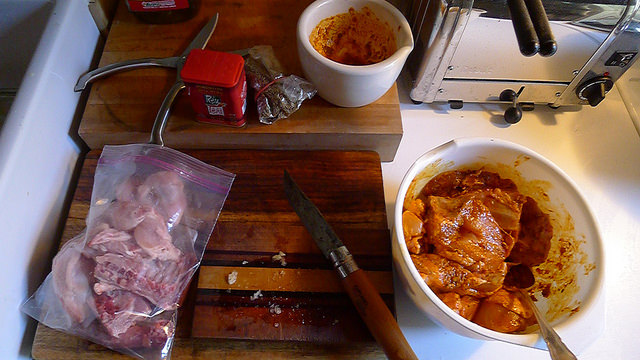
Locally Raised, Antibiotic and Hormone Free, Free Range Chicken from Little Portugal’s Nosso Talho… plenty of meat for my Morrocan Casserole and back, wings, and neck for stock… and all for $11.54
So what to do? Is there a happy medium somewhere between the, quite frankly, overpriced heritage breeds (that are more often than not more bone and sinew than edible flesh) and the vile bargain bucket fryers that you’ll find at many a discount outlet? An option that most will find quite affordable, therefore fulfilling my self-imposed democratization of gastronomy mandate? After many a year I appear to have discovered a solution to this quandary that has vexed me since 2000, and it just happens to be around the corner from our home in Little Portugal.
When I first saw Nosso Talho‘s ad for locally raised, antibiotic and hormone free, free range Ontario chicken at $2.79 a pound (and occasionally cheaper!), I’ll admit that I was a little taken aback. How could this be true? So I picked up a couple of whole chickens as a little experiment, and was very pleasantly surprised.
The birds (sourced from King Capon in Sharon, Ontario) tend to be on the larger size, coming in at between four and six pounds. They are plump and healthy looking specimens, and even in their raw form smell pleasantly fresh and appealing, a bona fide anomaly for a nose as sensitive as mine. Once cooked these chickens really do come into their own, with succulent, deeply flavoursome meat in breast, thigh, and leg… and their skin crisps up and browns a treat, just the way I like it. At Nosso Talho at 1326 Dundas West (also at 1042 Bloor), they really do sell some of the tastiest wallet-friendly chicken I have ever cooked.
Current favourite preparations are:
- The aforementioned Nigel Slater recipe for Classic, unmucked-about-with whole roast chicken… and its pan juices (butter, lemon, and a head of garlic) from his classic Appetite.
- Spatchcocked and brined (salt, pepper, 10 garlic cloves, rosemary, oregano, thyme, water, canola oil) then slow barbecued and basted (EVOO, 5 garlic cloves, juice of 1 lemon, 1/4 cup of honey, white wine vinegar) from Jamie Oliver’s barbecue guy Adam Perry Lang’s BBQ 25 book. Great for the summer months.
- Moroccan Chicken Casserole, marinating in spicy smoked paprika, turmeric, cumin, garlic, and olive oil overnight, and then cooking with olive oil, onions, lemon, saffron, with pitted green olives and cilantro leaves to garnish… another Slater dish from his BBC show Simple Suppers.
…
 Edinburgh-born/Toronto-based Sommelier, consultant, writer, judge, and educator Jamie Drummond is the Director of Programs/Editor of Good Food Revolution… And for the record he’s not on Nosso Talho’s payroll.
Edinburgh-born/Toronto-based Sommelier, consultant, writer, judge, and educator Jamie Drummond is the Director of Programs/Editor of Good Food Revolution… And for the record he’s not on Nosso Talho’s payroll.

